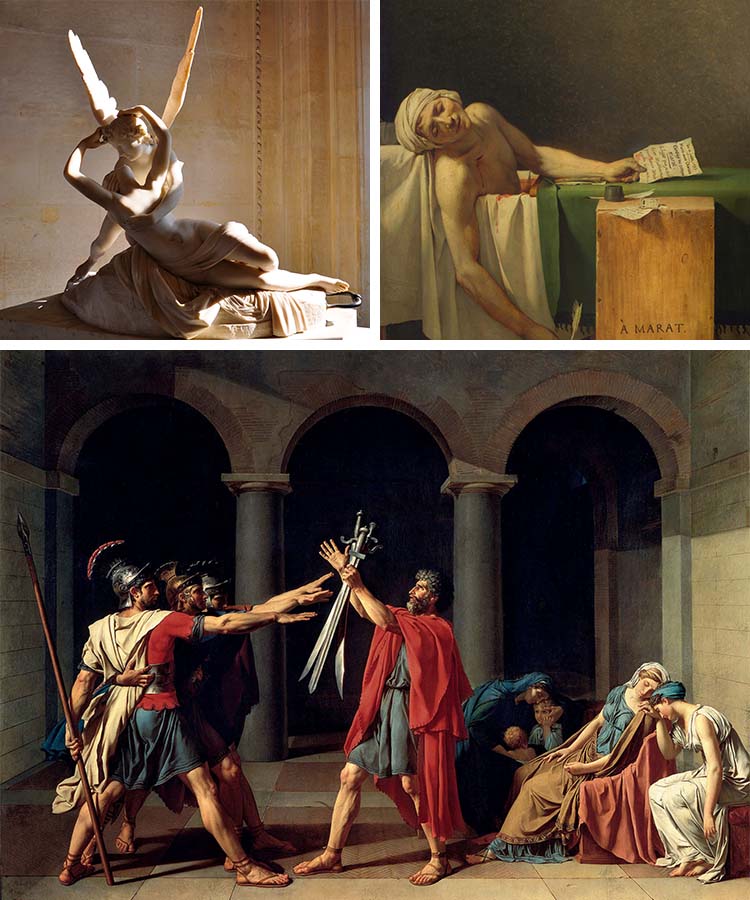
Throughout history, art movements have been created in response to their predecessors. So, in the 18th century, while the extravagance of Rococo and Baroque art were still thriving in Europe, another style was born with very different values. Established in the mid-1700s, the Neoclassical movement is defined by an interest in classical (i.e. Roman and Ancient Greece) aesthetics, principles, and subject matter.
The Neoclassical style had a major influence on painting, sculpture, architecture, and interior design. It revived an interest in symmetry and simplicity that was applied across visual arts. Two of the most famous artists who came to embody the ideals of this style were French painter Jacques-Louis David and Italian sculptor Antonio Canova.
Scroll down to learn more about Neoclassical art and its characteristics.
What is Neoclassical Art?
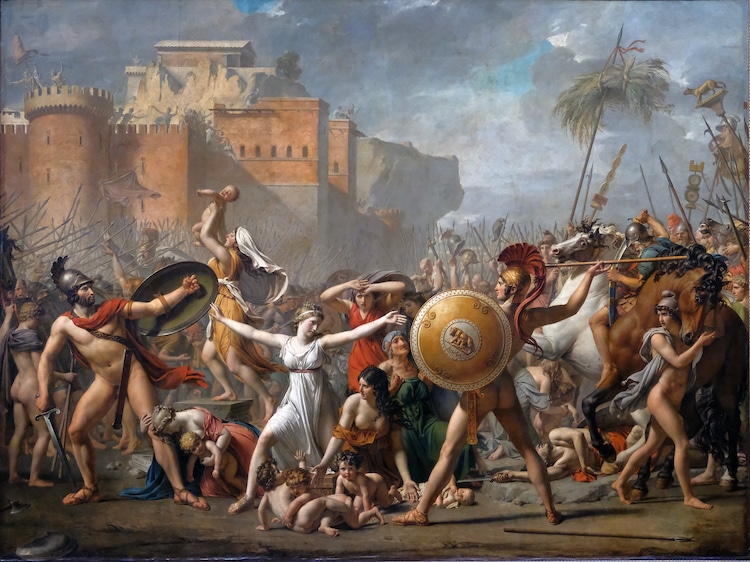
Jacques-Louis David, “The Intervention of the Sabine Women,” 1799 (Photo: Wikimedia Commons, Public domain)
Neoclassicism is an 18th-century art movement based on the ideals of art from Rome and Ancient Greece. Its interest in simplicity and harmony was partially inspired by a negative reaction to the overly frivolous aesthetic of the decorative Rococo style. The discovery of Roman archaeological cities Pompeii and Herculaneum (in 1738 and 1748, respectively) helped galvanize the spirit of this movement.
Characteristics of Neoclassical Art
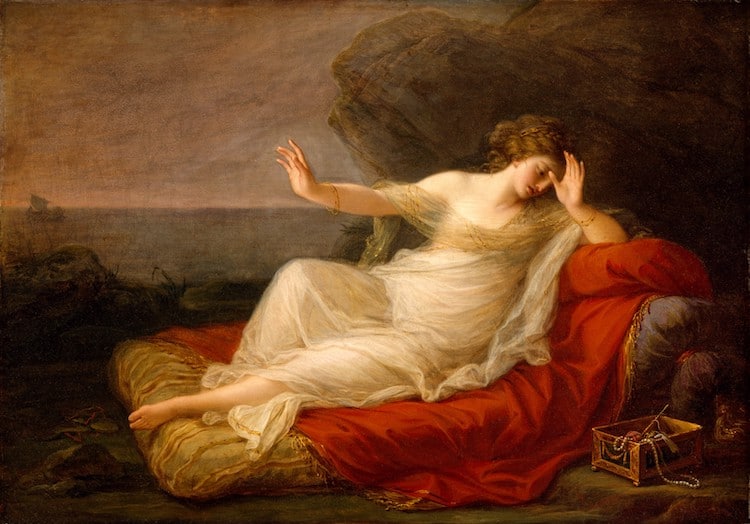
Angelica Kauffmann, “Ariadne Abandoned by Theseus,” 1774 (Photo: Wikimedia Commons, Public domain)
Neoclassical art shared several characteristics, all of which are built on Roman and Greek views on science, math, philosophy, and art. These characteristics are minimal use of color; emphasis on symmetry, straight lines, and geometric shapes; precise definition of forms and figures; and Classical subject matter.
Painting
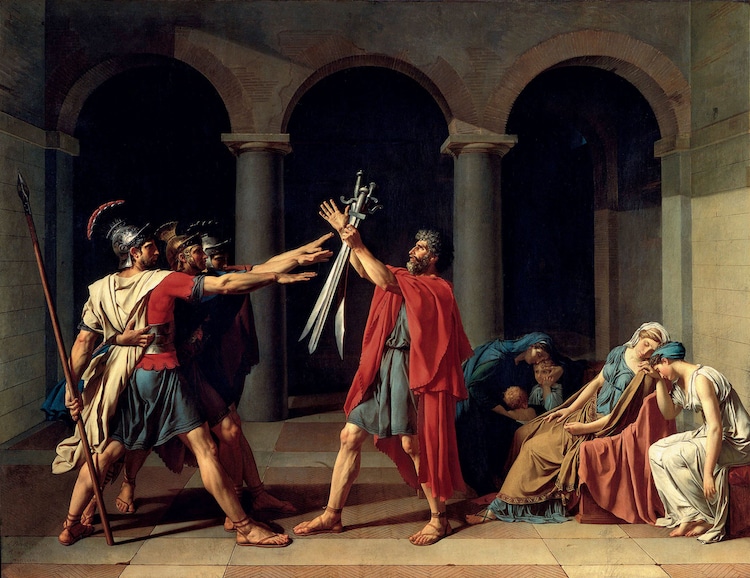
Jacques-Louis David, “The Oath of the Horatii,” 1784–1785 (Photo: Wikimedia Commons, Public domain)
The art of French painter Jacques Louis David—the leader of the Neoclassical style—represents the characteristics of Neoclassical painting. His work, The Oath of the Horatii embodies these traits.
For instance, it features classical subject matter that is based on a Roman legend about the three Horatii brothers. David also uses a limited, and even austere color palette, to convey the narrative, dominated by bright reds and some blue. Additionally, it is created with a harmonious composition that resembles the balance and clarity of a scene on stage. Lastly, it exhibits precise draftsmanship with bold, strong lines and minimal ornamentation.
Sculpture
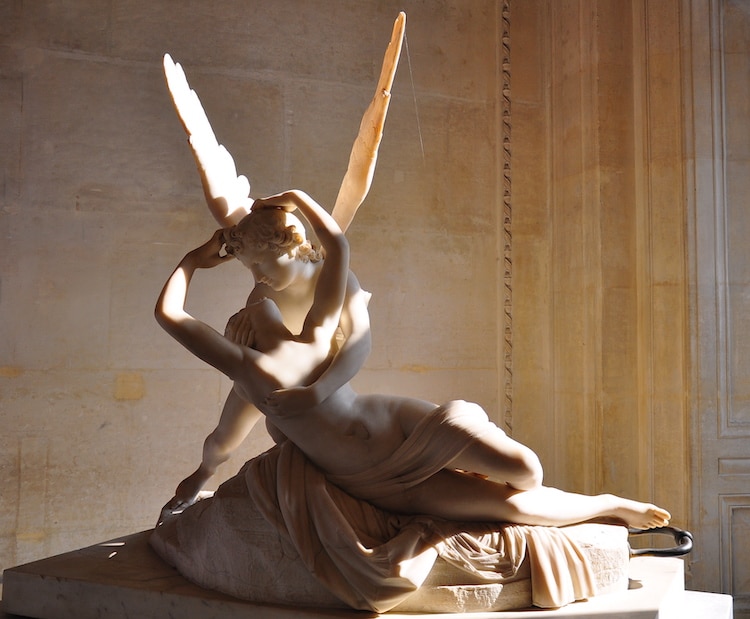
Antonio Canova, “Psyche Revived by Cupid’s Kiss,” 1887 (Photo: Kimberly Vardeman via Wikimedia Commons, CC BY-SA 2.0)
Neoclassical sculpture shared many similar values to painting. Artists of this style created sculptures inspired by classical and mythological subject matter. They produced idealized figures with smooth contouring, resembling the statues from Athens and Rome, oftentimes on a life-size scale.
Architecture
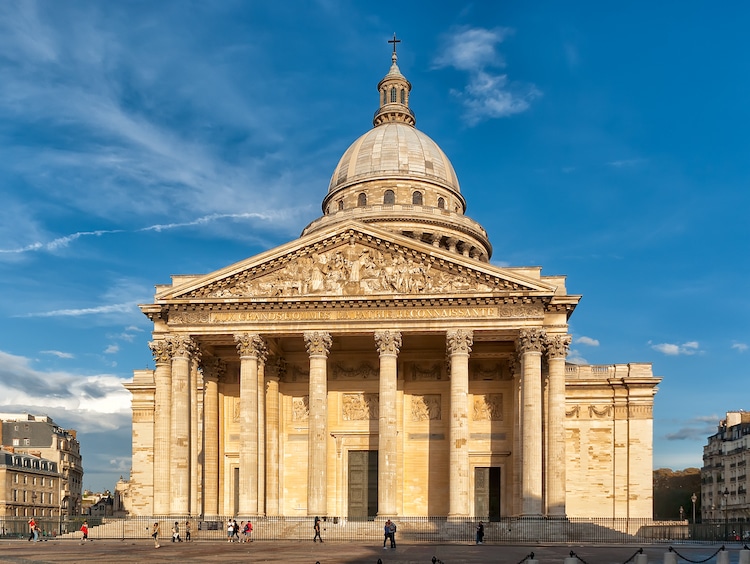
Panthéon in Paris, France (Photo: mix7777/DepositPhotos)
Neoclassical architecture wanted to create impressive, large-scale buildings without the ornate elements of the Rococo and Baroque style. It utilized Ancient Greek and Roman details, impressive columns, geometric forms, and domed or flat roofs. The Panthéon in Paris—which was constructed between 1758 and 1790—is a hallmark of Neoclassical architecture and embodies all of these characteristics.
Famous Neoclassical Artists
Jacques-Louis David
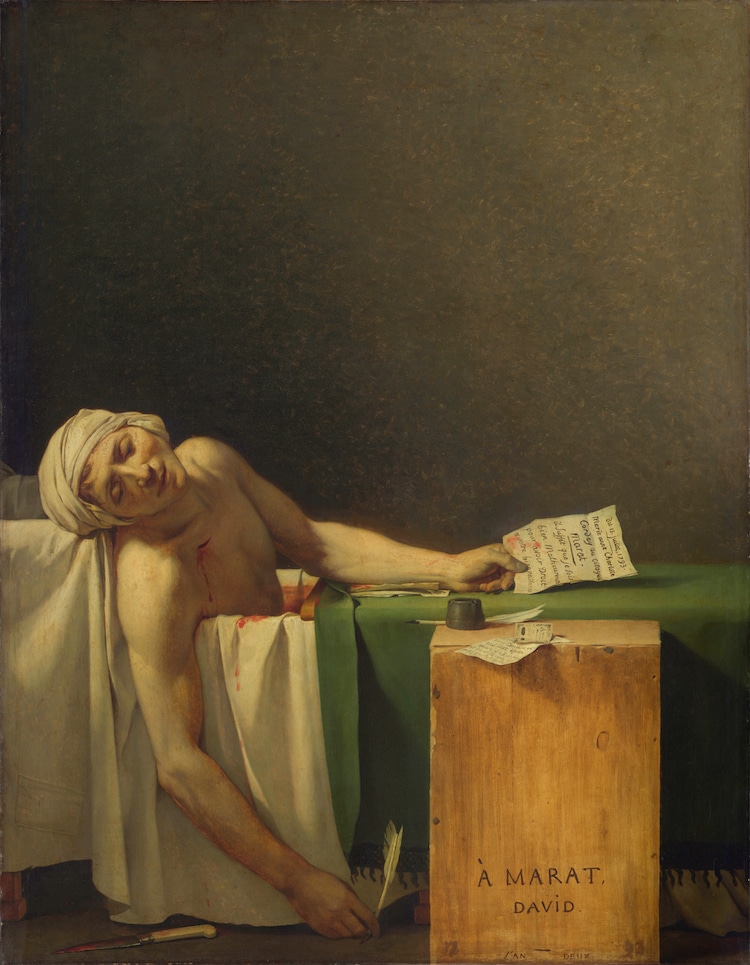
Jacques-Louis David, “Death of Marat,” 1793 (Photo: Wikimedia Commons, Public domain)
Most consider Jacques-Louis David (1748–1825) to be the leading Neoclassical painter of the era. Originally from Paris, he received a robust and well-rounded education in fine art that honed his talents and helped him become a sensation at the Salon. He produced art that was unlike the Rococo status quo—with few colors, minimalist but balanced compositions, and depictions of classical subject matter. During the French Revolution, he affiliated himself with Maximilien Robespierre and created art that supported his side. Later, when Napoleon rose to power, David realigned himself again and made art in support of the new regime. His art had a far-reaching impact on Neoclassical artists across Europe.
Significant works: The Oath of the Horatii (1784–1785), The Death of Socrates (1787), Death of Marat (1793), Napoleon Crossing the Alps (1801–1805)
Jean-Auguste-Dominique Ingres
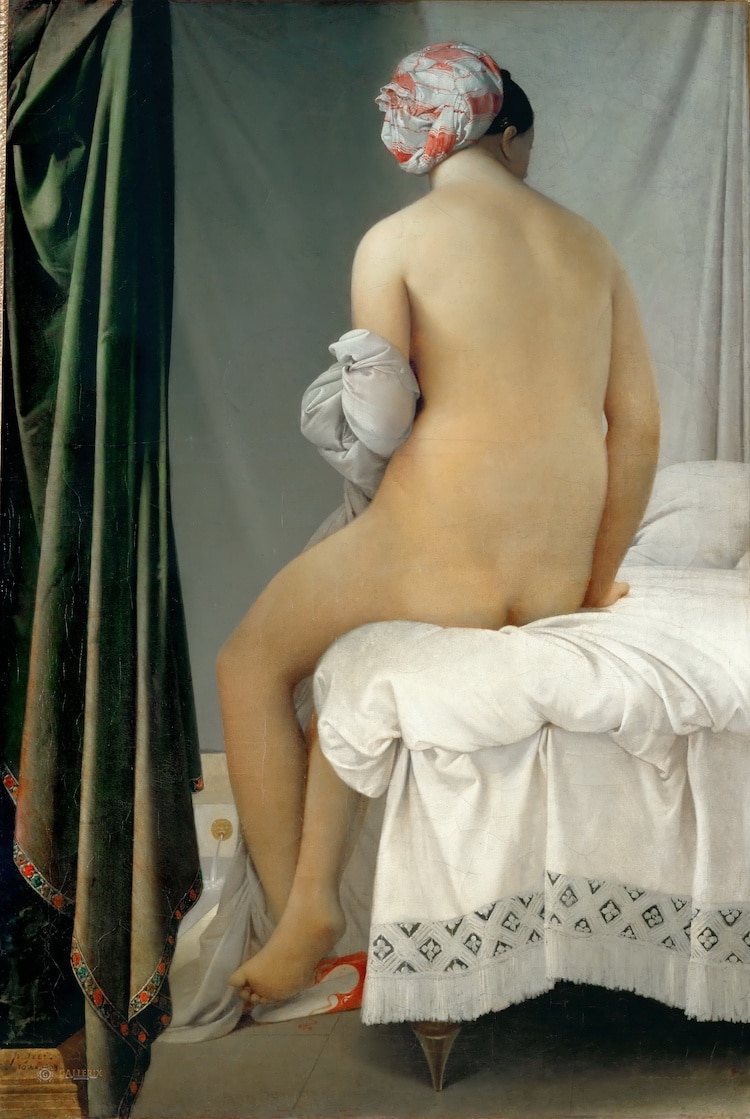
Jean Auguste Dominique Ingres, “The Valpinçon Bather ,” 1808 (Photo: Wikimedia Commons, CC BY-SA 3.0)
Born a couple of decades after David, French artist Jean-Auguste-Dominique Ingres (1780–1867) inherited the Neoclassical tradition and created art that was largely academic in style. His skills as one of the best draftsmen helped him create compelling portraiture, most of which are his best-known works. Later, when Romanticism arose as another leading art movement, Ingres and Eugène Delacroix were pitted against each other as symbols of the old and new styles.
Significant works: The Grande Odalisque (1814)
Antonio Canova
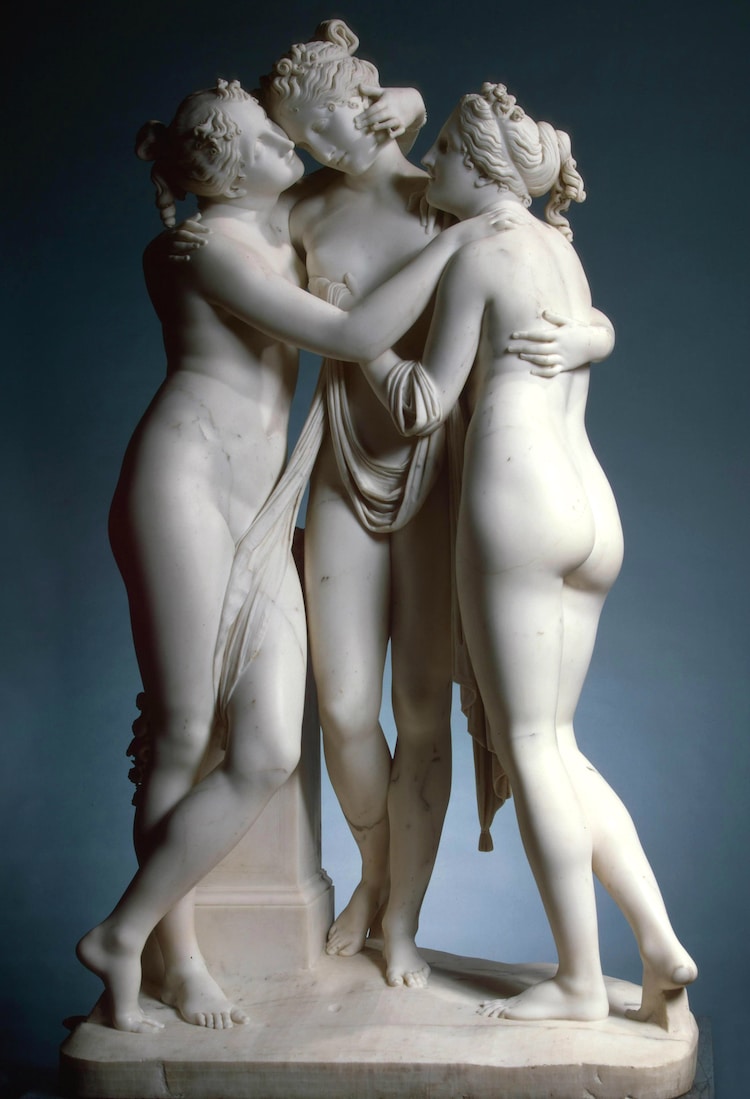
Antonio Canova, “The Three Graces,” 1815–1817 (Photo: Wikimedia Commons, CC BY-SA 3.0)
Originally from the Venice Republic, Antonio Canova (1757–1822) is considered to be the greatest Neoclassical sculptor whose work defined the style. He created numerous large-scale marble sculptures inspired by classical mythology, with idealized figures in graceful compositions. In particular, his sculptures are known for their polished finish, which Canova would spend weeks or even months polishing with pumice stone.
Significant Works: Psyche Revived by Cupid's Kiss (1787)
Related Articles:
What We Can Learn From the Exquisite History and Ornate Aesthetic of Gothic Architecture
How Delacroix Captured France’s Revolutionary Spirit in ‘Liberty Leading the People’
How the Lesser-Known ‘Venetian School’ Flourished During the Italian Renaissance
18th-Century Self-Portrait Paintings Reveal the Rarely Seen Silly Side of Rococo Portraiture






















































































